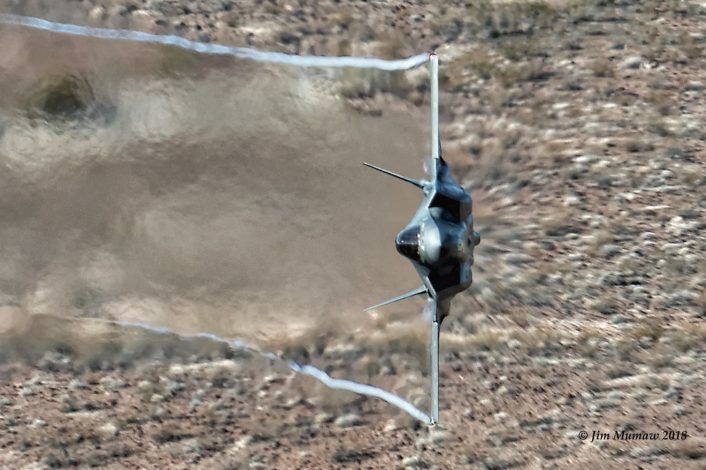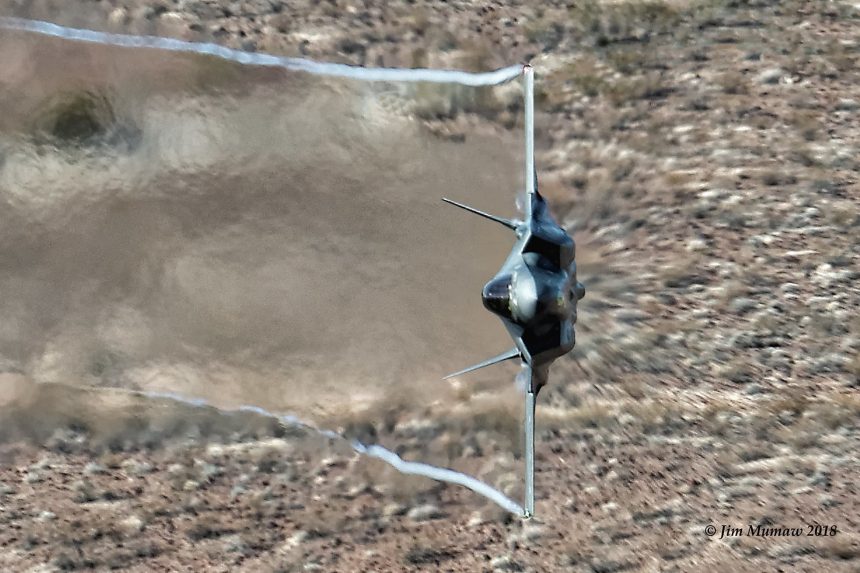What makes this shot really amazing is the distortion caused by the modified index of refraction around the aircraft as a consequence of the shock waves.
“Star Wars Canyon” (aka Rainbow Canyon) which empties into the Panamint Valley region of Death Valley National Park does not need any introduction: it has become very popular among serious aviation photographers from all around the world who daily exploit the unique opportunity to shoot fast jets, warbirds and also airlifters during their transit through the so-called “Jedi Transition”
Though there are no schedules as to air traffic through the low level route (which can range from sparse to busy), it is the scene of some of the finest examples of low level flying by some of the best pilots.
Last week, some F-35A Lightning jets out of Edwards Air Force Base, California, were using the canyon for some advanced training. This shot, was taken during that training. Although Death Valley and the immediate vicinity are famous for being dry, arid desert, there is enough moisture left in the air to be squeezed out by the aerodynamics of some aircraft to form vapor such as the vortices from this Lightning II’s wingtips. While the jet wash and heat wave from the exhaust are obvious and common in many photographs, there is also a subtle change. There is distortion at the belly of the fighter (right side of the photo) which almost appears to be that of a camera being zoomed out during the shot. However, if this were the case, the effect would be seen throughout the entire image which it’s not.
In this case, the distortion that our friend and renowned photographer Jim Mumaw caught in this cool photograph is actually caused by the shock waves around the 5th generation aircraft.
At speed lower than the transonic region, air flows smoothly around the airframe; in the transonic region, airflow begins to reach the speed of sound in localized areas on the aircraft, including the upper surface of the wing and the fuselage: shock waves, generated by pressure gradient resulting from the formation of supersonic flow regions, represent the location where the air moving at supersonic speed transitions to subsonic. When the density of the air changes (in this case as a consequence of shock waves) there is a change in its refractive index, resulting in light distortion.

“Cameras often catch moments like this one which our eyes cannot,” Mumaw comments.









